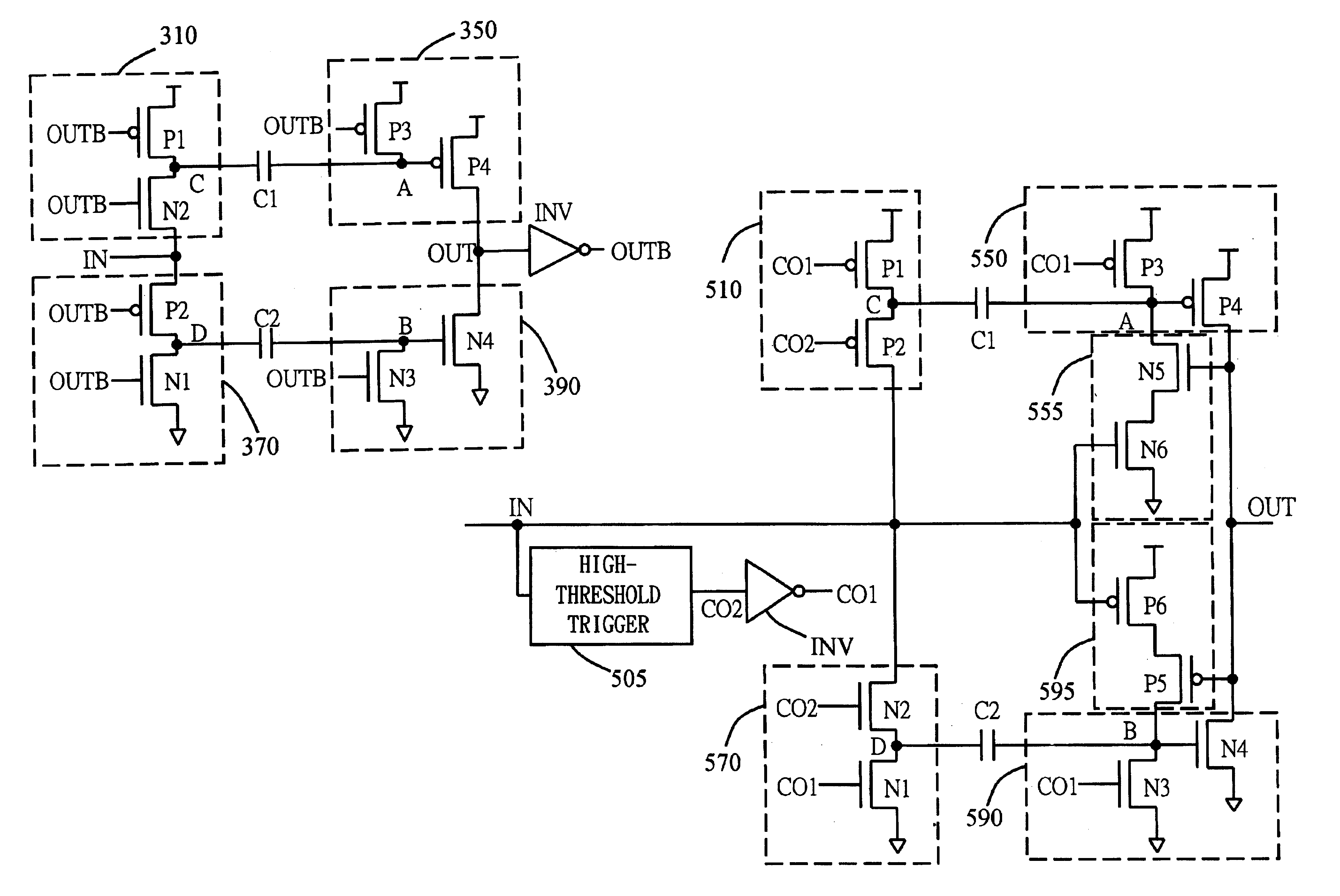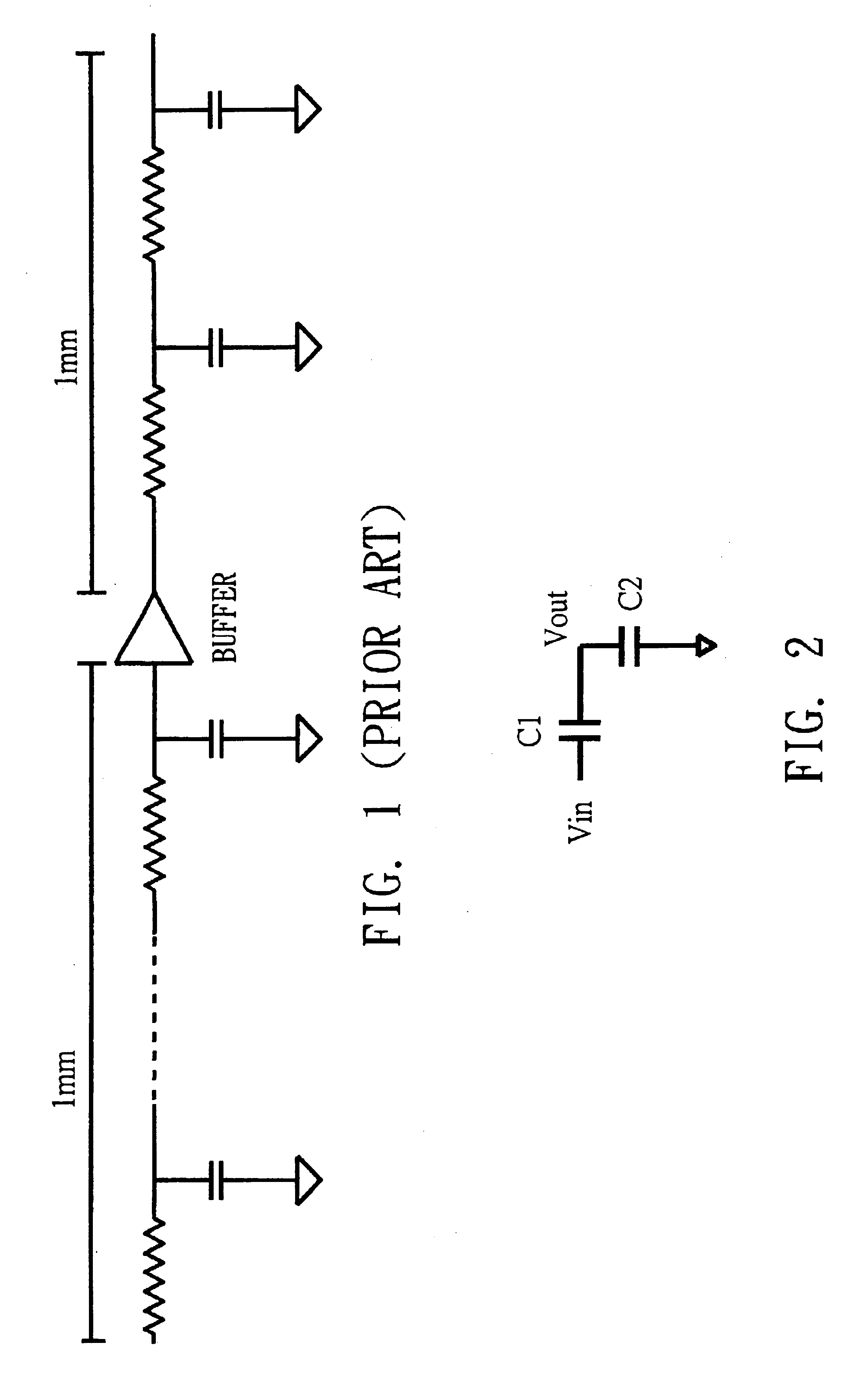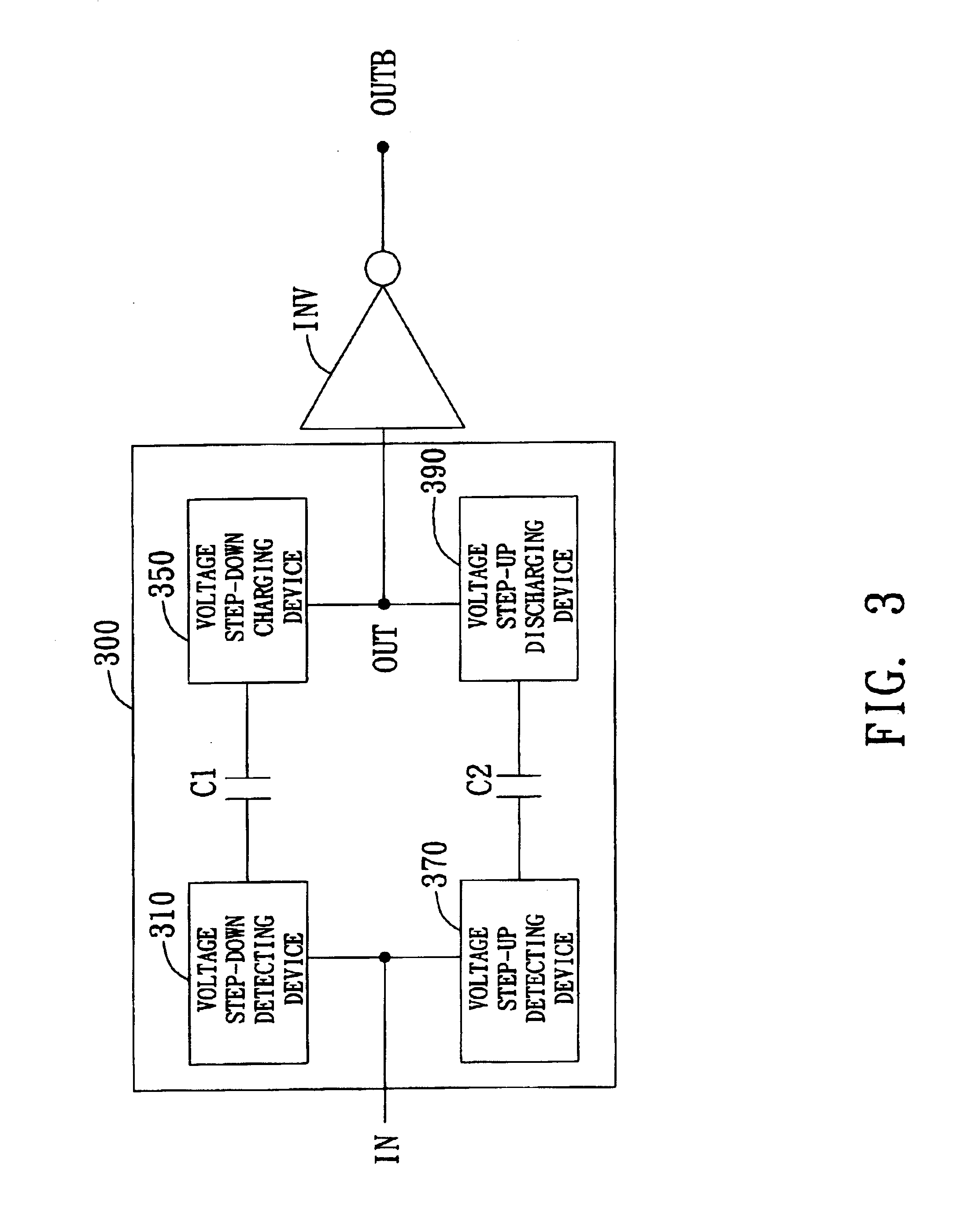Apparatus for capacitor-coupling acceleration
- Summary
- Abstract
- Description
- Claims
- Application Information
AI Technical Summary
Benefits of technology
Problems solved by technology
Method used
Image
Examples
first embodiment
A high-threshold capacitor-coupling trigger 300 is illustrated in FIG. 3 according to a first embodiment of the invention in block diagram form. The high-threshold capacitor-coupling trigger (HCCT) 300 includes two capacitors C1, C2, a voltage step-down detecting device 310, a voltage step-down charging device 350, a voltage step-up detecting device 370, and a voltage step-up discharging device 390. The high-threshold capacitor-coupling trigger 300 has an output signal at the output terminal OUT and the output signal is a delayed version of an input signal IN. The voltage step-down detecting device 310 is used for detecting a slow decrease in the voltage of an input signal IN and outputting a step-down signal corresponding to and being delayed against the slow decrease during the slow increase. When the input signal IN decreases from a high level to a predetermined value, the voltage step-down detecting device 310 outputs the step-down signal corresponding to the decrease of the inp...
second embodiment
A low-threshold capacitor-coupling trigger 500, as shown in FIG. 5, is a block diagram of a second embodiment of the invention, with an input terminal IN and an output terminal OUT. The low-threshold capacitor-coupling trigger 500 can be used as a signal receiver for signals from an interconnect line, for example. The low-threshold capacitor-coupling trigger 500 includes capacitors C1, C2, accelerating devices 555, 595, a voltage step-down detecting device 510, a voltage step-down charging device 550, a voltage step-up detecting device 570, and a voltage step-up discharging device 590. The voltage step-down detecting device 510, coupled to the input terminal IN, is used for detecting a slow voltage decrease of an input signal at the input terminal so as to output a step-down signal corresponding to the input signal. When the input signal drops from a high level, the voltage step-down detecting device 510 outputs the step-down signal according to the decrease of the input signal. The...
third embodiment
A capacitor-coupling accelerator is illustrated in FIG. 7 according to a third embodiment of the invention. The capacitor-coupling accelerator shown in FIG. 7 is an accelerator based on the circuit configuration of the second embodiment and can be disposed on an interconnect line TL to accelerate the signal transition occurred on the interconnect line TL. The capacitor-coupling accelerator can be designed to be in the middle of the interconnect line TL to accelerate the signal transition occurred on the interconnect line TL. Because some of the circuit components of the capacitor-coupling accelerator in FIG. 7, including the capacitors C1, C2, the accelerating devices 555, 595, the voltage step-down detecting device 510, the voltage step-down charging device 550, the voltage step-up detecting device 570, and the voltage step-up discharging device 590, are identical to those in the second embodiment, the detailed operations of these components will not be described. Instead, the oper...
PUM
 Login to View More
Login to View More Abstract
Description
Claims
Application Information
 Login to View More
Login to View More - R&D
- Intellectual Property
- Life Sciences
- Materials
- Tech Scout
- Unparalleled Data Quality
- Higher Quality Content
- 60% Fewer Hallucinations
Browse by: Latest US Patents, China's latest patents, Technical Efficacy Thesaurus, Application Domain, Technology Topic, Popular Technical Reports.
© 2025 PatSnap. All rights reserved.Legal|Privacy policy|Modern Slavery Act Transparency Statement|Sitemap|About US| Contact US: help@patsnap.com



